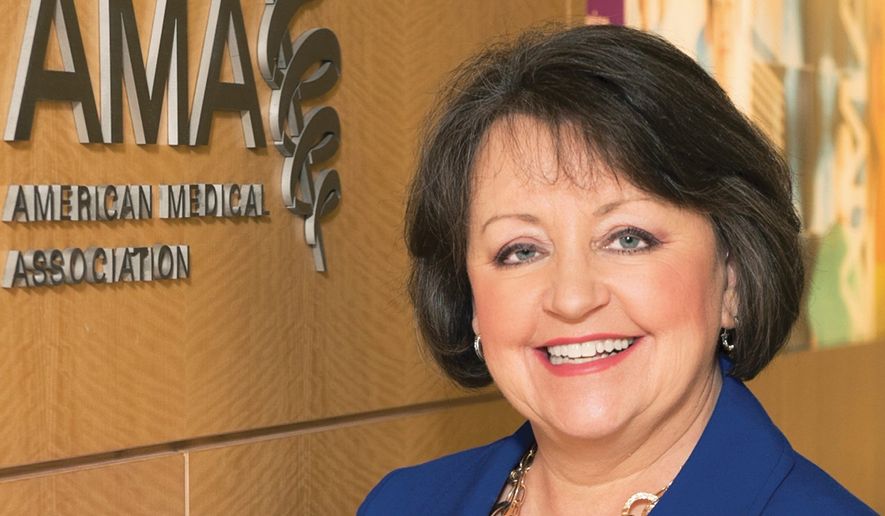OPINION:
The COVID-19 pandemic strained nearly every sector, but our health care system is under stress like none other. Since day one, physicians have been on the frontlines combatting the virus. Against this backdrop, many physicians and their practices are suffering heavy financial losses because Medicare spending on physician services dropped significantly in 2020. In fact, recent data analyses indicate that Medicare spending on physician services in the first half of 2020 fell by $9.4 billion, or 19 percent when compared to projected spending in the absence of the pandemic. This drop in spending — and care provided to patients — threatens the very viability of physician practices and the health of people nationwide.
Congress has an opportunity to address these unprecedented challenges, protect physician practices, and, in the process, restore the more than 56,000 jobs lost in physician offices over the past year.
The American Medical Association (AMA), joined by other leading organizations, is encouraging Congress to fully extend the Medicare sequester moratorium through the end of the COVID-19 Public Health Emergency, which is expected to continue through the end of 2021. The moratorium solved an issue that originated with the Budget Control Act of 2011 that reduced Medicare payments for all providers by 2 percent. At the time, no one envisioned the devastating impact 2020 would have. Further cuts loom now that American Rescue Plan has triggered “PayGo,” requiring an additional 4 percent Medicare sequester on physicians and others who are caring for COVID-19 patients.
I have been in private practice for over 30 years and active in the AMA since medical school when I served as chair of the AMA Medical Student Section. Without reservation, I can say that no other public health crisis in my lifetime has been as devastating as the ongoing COVID-19 pandemic. The threat of a combined 6 percent reduction in Medicare payments adds an additional existential threat to physicians who are exhausted and stretched to their limit treating patients afflicted with this lethal virus.
A three-month reprieve from the 2 percent Medicare sequester cuts came at the end of 2020 following enactment of the Consolidated Appropriations Act, 2021, but this delay is set to expire on April 1. Stopgap measures do not afford physicians throughout the budgetary certainty needed to address financial viability and mitigate losses to ensure access to care for their patients during this crisis and beyond. Vaccines are being administered and infection rates of COVID-19 are thankfully on the decline, but we are not out of the crisis yet. This is not the time to cut Medicare support for those who provide care to our communities.
Additional data show that the COVID-19 crisis has negatively impacted revenue for all physicians. In fact, the drop in Medicare spending on physician services at the start of the pandemic was nearly identical for all major types of services. One year ago, at the end of March 2020, spending for office visit (evaluation and management) services fell nearly 50 percent compared to expected projections. Spending for imaging, procedures and tests continued to drop until mid-April of 2020, dropping as much as roughly 65-70 percent below expected spending.
Though some specialized medical practices fared better than others, every physician specialty witnessed a decline in Medicare Physician Fee Schedule (MPFS) spending. Cumulative impacts through the end of June 2020, in both dollar and percentage terms, are shown in the chart above. It illustrates the decline in 2020 compared to the projected spending in the absence of the pandemic.
These are not simply dry statistics. Rather, they reflect how the pandemic has affected the decisions patients make about their own care: whether to seek services to stay well and whether to seek medical attention for acute illness. For example, office and outpatient hospital MPFS spending dropped as much as 63 percent and 70 percent, respectively, in the first half of 2020. Ambulatory surgical center spending was down 90 percent last April as elective procedures like cataract surgery and colonoscopy were delayed. It is unclear what the consequences of the drop-in services received may be for Medicare patients’ health in the future, but my colleagues and I fear the negative ramifications of this level of lost care.
The impact of the pandemic on physician practices is even more severe after factoring in that Medicare physician pay does not go nearly as far as it once did. The cost of running a medical practice increased 37 percent between 2001 and 2020, or 1.7 percent per year. Meanwhile, according to Medicare Trustees data, Medicare physician pay has barely changed over the same two decades, increasing seven percent from 2001 to 2020, or 0.3 percent per year on average. Adjusted for inflation in practice costs, Medicare physician pay declined 22 percent or 1.3 percent per year on average since 2001.
This issue matters in homes across our country and in the physician offices our patients need to remain open and viable. Our commitment to providing medical care reflects our nation’s values. As Hippocrates said, “Wherever the art of medicine is loved, there is also a love of humanity.” We urge Congress to act now to prevent the triggering of additional cuts.
• Dr. Susan R. Bailey is the president of the American Medical Association (AMA), the largest and only national association that convenes 190+ state and specialty medical societies and other critical stakeholders. As the physicians’ ally in patient care, the AMA delivers on its mission by representing physicians with a unified voice, removing obstacles that interfere with patient care, leading the charge to prevent chronic disease and confront public health crises, and driving the future of medicine to tackle the biggest challenges in health care and training the leaders of tomorrow.




Please read our comment policy before commenting.